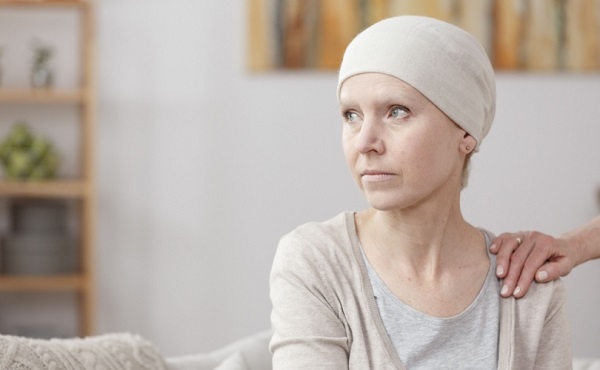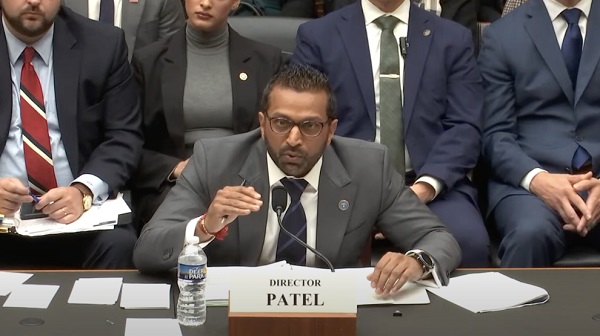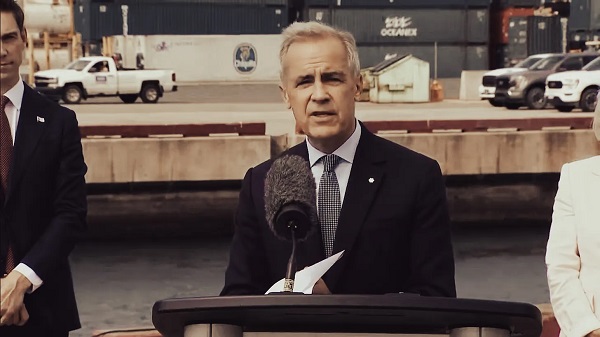Health
Coalition of doctors warns Supreme Court ‘transitioning’ children causes ‘significant’ damage

From LifeSiteNews
The American College of Pediatricians, Catholic Medical Association, and other pro-family medical groups are defending Tennessee’s ban on ‘gender transitions’ for children and stressing to the Supreme Court that the ban is vital to their patients’ health and welfare.
A coalition of pro-family medical organizations has submitted an amicus brief to the U.S. Supreme Court urging it to uphold Tennessee’s ban on surgically and chemically “transitioning” gender-confused minors, presenting a comprehensive case against the practice as contrary to both science and health.
In March 2023, Tennessee Gov. Bill Lee signed SB1, which forbids subjecting minors to surgical or chemical “sex change” interventions, such as puberty blockers, cross-sex hormones, and mutilating surgeries.
LGBT activists sued, and last September a three-judge panel of the 6th Circuit Court of Appeals ruled the law could be enforced, finding sufficient evidence linking puberty blockers to harmful effects. The Biden administration appealed the ruling to the nation’s highest court, which confirmed earlier this month it will begin hearing oral arguments on the matter in December.
Among several interested parties to weigh in on both sides of the case, on October 15 an amicus brief was filed on behalf of the American College of Pediatricians, Alliance for Hippocratic Medicine, American Association of Christian Counselors, Association of American Physicians & Surgeons, Catholic Medical Association, and Christian Medical & Dental Association in support of Tennessee and SB1, citing their “direct interest in the outcome of this case because it affects the vulnerable population” they serve as medical providers.
“Scientific research shows that children with gender incongruence or dysphoria almost always have significant mental health struggles and adverse childhood events that contribute to if not cause their dysphoria,” the brief states. “And multiple studies show that these children almost always grow out of or desist from such gender incongruity while going through puberty. Yet when children are placed on puberty blockers and/or cross-sex hormones, they almost always proceed to ‘gender transition’ surgeries with life-long adverse consequences.”
It goes on to note that, despite gender activists’ insistence that the evidence for “affirming” transgenderism is so clear as to make opposition “cruel,” in reality, “there are no long-term, reliable studies on the benefits from starting a child on” the pathway of puberty blockers, cross-sex hormones, and surgical mutilation. While failing to improve children’s mental health, “transitioning” also leads to “significant mental health issues in the long-term” and does “nothing to treat the underlying mental health struggles” they face, according to the available evidence.
SB1, the doctors write, is “consistent with sound medical practice: Rather than push a pre-teen to drugs and permanent body-altering surgery, the appropriate medical treatment is to address the child’s underlying mental health issues while allowing the child to go through natural puberty […] upon reaching adulthood, the vast majority of children who were not ‘affirmed’ in a gender-incongruent identity will no longer feel any distress in their sex.”
The amicus brief by medical experts in support of Tennessee follows similar briefs presented to the nation’s highest court by Partners for Ethical Care, representing parents whose children suffered from being misled into “transitioning,” and the United States Conference of Catholic Bishops, which makes the moral case against “transitioning” minors and warns of potential dangers to the freedoms of those who object should the Tennessee law be struck down.
A significant body of evidence shows that “affirming” gender confusion carries serious harms, especially when done with impressionable children who lack the mental development, emotional maturity, and life experience to consider the long-term ramifications of the decisions being pushed on them, or full knowledge about the long-term effects of life-altering, physically transformative, and often irreversible surgical and chemical procedures.
Studies find that more than 80 percent of children suffering gender dysphoria outgrow it on their own by late adolescence and that “transition” procedures, including “reassignment” surgery, fail to resolve gender-confused individuals’ heightened tendency to engage in self-harm and suicide – and even exacerbate it, including by reinforcing their confusion and neglecting the actual root causes of their mental strife.
Many oft-ignored “detransitioners,” individuals who attempted to live under a different “gender identity” before embracing their sex, attest to the physical and mental harm of reinforcing gender confusion, as well as to the bias and negligence of the medical establishment on the subject, many of whom take an activist approach to their profession and begin cases with a predetermined conclusion in favor of “transitioning.”
“Gender-affirming” physicians have also been caught on video admitting to more old-fashioned motives for such procedures, as with an 2022 exposé about Vanderbilt University Medical Center’s Clinic for Transgender Health, where Dr. Shayne Sebold Taylor said outright that “these surgeries make a lot of money.”
Opponents of transgender ideology are hopeful that the Supreme Court will rule in Tennessee’s favor and set a nationwide precedent protecting every state’s right to make the same decision.
Addictions
No, Addicts Shouldn’t Make Drug Policy

By Adam Zivo
Canada’s policy of deferring to the “leadership” of drug users has proved predictably disastrous. The United States should take heed.
[This article was originally published in City Journal, a public policy magazine and website published by the Manhattan Institute for Policy Research]
Progressive “harm reduction” advocates have insisted for decades that active users should take a central role in crafting drug policy. While this belief is profoundly reckless—akin to letting drunk drivers set traffic laws—it is now entrenched in many left-leaning jurisdictions. The harms and absurdities of the position cannot be understated.
While the harm-reduction movement is best known for championing public-health interventions that supposedly minimize the negative effects of drug use, it also has a “social justice” component. In this context, harm reduction tries to redefine addicts as a persecuted minority and illicit drug use as a human right.
This campaign traces its roots to the 1980s and early 1990s, when “queer” activists, desperate to reduce the spread of HIV, began operating underground needle exchanges to curb infections among drug users. These exchanges and similar efforts allowed some more extreme LGBTQ groups to form close bonds with addicts and drug-reform advocates. Together, they normalized the concept of harm reduction, such that, within a few years, needle exchanges would become officially sanctioned public-health interventions.
The alliance between these more radical gay rights advocates and harm-reduction proponents proved enduring. Drug addiction remained linked to HIV, and both groups shared a deep hostility to the police, capitalism, and society’s “moralizing” forces.
In the 1990s, harm-reduction proponents imitated the LGBTQ community’s advocacy tactics. They realized that addicts would have greater political capital if they were considered a persecuted minority group, which could legitimize their demands for extensive accommodations and legal protections under human rights laws. Harm reductionists thus argued that addiction was a kind of disability, and that, like the disabled, active users were victims of social exclusion who should be given a leading role in crafting drug policy.
These arguments were not entirely specious. Addiction can reasonably be considered a mental and physical disability because illicit drugs hijack users’ brains and bodies. But being disabled doesn’t necessarily mean that one is part of a persecuted group, much less that one should be given control over public policy.
More fundamentally, advocates were wrong to argue that the stigma associated with drug addiction was senseless persecution. In fact, it was a reasonable response to anti-social behavior. Drug addiction severely impairs a person’s judgement, often making him a threat to himself and others. Someone who is constantly high and must rob others to fuel his habit is a self-evident danger to society.
Despite these obvious pitfalls, portraying drug addicts as a persecuted minority group became increasingly popular in the 2000s, thanks to several North American AIDS organizations that pivoted to addiction work after the HIV epidemic subsided.
In 2005, the Canadian HIV/AIDS Legal Network published a report titled “Nothing about us without us.” (The nonprofit joined other groups in publishing an international version in 2008.) The 2005 report included a “manifesto” written by Canadian drug users, who complained that they were “among the most vilified and demonized groups in society” and demanded that policymakers respect their “expertise and professionalism in addressing drug use.”
The international report argued that addiction qualified as a disability under international human rights treaties, and called on governments to “enact anti-discrimination or protective laws to reduce human rights violations based on dependence to drugs.” It further advised that drug users be heavily involved in addiction-related policy and decision-making bodies; that addict-led organizations be established and amply funded; and that “community-based organizations . . . increase involvement of people who use drugs at all levels of the organization.”
While the international report suggested that addicts could serve as effective policymakers, it also presented them as incapable of basic professionalism. In a list of “do’s and don’ts,” the authors counseled potential employers to pay addicts in cash and not to pass judgment if the money were spent on drugs. They also encouraged policymakers to hold meetings “in a low-key setting or in a setting where users already hang out,” and to avoid scheduling meetings at “9 a.m., or on welfare cheque issue day.” In cases where addicts must travel for policy-related work, the report recommended policymakers provide “access to sterile injecting equipment” and “advice from a local person who uses drugs.”
The international report further asserted that if an organization’s employees—even those who are former drug users—were bothered by the presence of addicts, then management should refer those employees to counselling at the organization’s expense. “Under no circumstances should [drug addicts] be reprimanded, singled out or made to feel responsible in any way for the triggering responses of others,” stressed the authors.
Reflecting the document’s general hostility to recovery, the international report emphasized that former drug addicts “can never replace involvement of active users” in public policy work, because people in recovery “may be somewhat disconnected from the community they seek to represent, may have other priorities than active users, may sometimes even have different and conflicting agenda, and may find it difficult to be around people who currently use drugs.”
Subscribe for free to get BTN’s latest news and analysis – or donate to our investigative journalism fund.
The messaging in these reports proved highly influential throughout the 2000s and 2010s. In Canada, federal and provincial human rights legislation expanded to protect active addicts on the basis of disability. Reformers in the United States mirrored Canadian activists’ appeals to addicts’ “lived experience,” albeit with less success. For now, American anti-discrimination protections only extend to people who have a history of addiction but who are not actively using drugs.
The harm reduction movement reached its zenith in the early 2020s, after the Covid-19 pandemic swept the world and instigated a global spike in addiction. During this period, North American drug-reform activists again promoted the importance of treating addicts like public-health experts.
Canada was at the forefront of this push. For example, the Canadian Association of People Who Use Drugs released its “Hear Us, See Us, Respect Us” report in 2021, which recommended that organizations “deliberately choose to normalize the culture of drug use” and pay addicts $25-50 per hour. The authors stressed that employers should pay addicts “under the table” in cash to avoid jeopardizing access to government benefits.
These ideas had a profound impact on Canadian drug policy. Throughout the country, public health officials pushed for radical pro-drug experiments, including giving away free heroin-strength opioids without supervision, simply because addicts told researchers that doing so would be helpful. In 2024, British Columbia’s top doctor even called for the legalization of all illicit drugs (“non-medical safer supply”) primarily on the basis of addict testimonials, with almost no other supporting evidence.
For Canadian policymakers, deferring to the “lived experiences” and “leadership” of drug users meant giving addicts almost everything they asked for. The results were predictably disastrous: crime, public disorder, overdoses, and program fraud skyrocketed. Things have been less dire in the United States, where the harm reduction movement is much weaker. But Americans should be vigilant and ensure that this ideology does not flower in their own backyard.
Subscribe to Break The Needle.
Our content is always free – but if you want to help us commission more high-quality journalism,
consider getting a voluntary paid subscription.
COVID-19
Canadian gov’t to take control of vaccine injury program after reports of serious mismanagement

From LifeSiteNews
The Canadian federal gov’t will take over the Vaccine Injury Support Program from Oxaro by March 2026 following reports of misallocated funds, unresolved claims, and unprofessional conduct.
The federal government is taking over Canada’s vaccine injury program after reports have discovered mismanagement.
The Public Health Agency of Canada (PHAC) is expected to take control of the Vaccine Injury Support Program (VISP) beginning on March 31, 2026, after a Global News report exposed the program for misallocating taxpayer funds and disregarding many vaccine-injured Canadians.
“We will publicly share further details on how the program will be delivered under PHAC when they become available,” Guillaume Bertrand, director of communications for Health Minister Marjorie Michel, told Global News.
Bertrand revealed that the government contract with Oxaro, the company tasked with running the VISP, will end in March, after which the federal government will take control.
“This is also part of our commitment to significantly reducing reliance on external consultants, while improving the capacity of the public service to hire expertise in-house,” Bertrand said.
Canada’s VISP was launched in December 2020 after the Canadian government gave vaccine makers a shield from liability regarding COVID-19 jab-related injuries; however, mismanagement within the program has led to many injured Canadians still waiting to receive compensation, while government contractors grow richer.
In July, Conservatives penned a letter calling for an investigation into the failing program, saying, “Despite the $50 million contract, over 1,700 of the 3,100 claims remain unresolved. Families dealing with life-altering injuries have been left waiting years for answers and support they were promised.”
Furthermore, the claims do not represent the total number of Canadians injured by the allegedly “safe and effective” COVID shots, as inside memos have revealed that Public Health Agency of Canada (PHAC) officials neglected to report all adverse effects from COVID shots and even went as far as telling staff not to report all events.
The PHAC’s downplaying of vaccine injuries is of little surprise to Canadians, as a 2023 secret memo revealed that the federal government purposefully hid adverse event reports so as not to alarm Canadians.
Of the $50.6 million that Oxaro Inc., has received, $33.7 million has been spent on administrative costs, compared to only $16.9 million going to vaccine-injured Canadians.
The letter further documented former VISP employees’ concerns that the program lacked professionalism and outlining what Conservatives described as “a fraternity house rather than a professional organization responsible for administering health-related claims.”
“Reports of constant workplace drinking, ping pong, and Netflix are a slap in the face to taxpayers and the thousands of Canadians waiting for support for life altering injuries,” the letter continued.
The federal government has ordered an audit into VISP. In late July, PHAC revealed that it is expediting its audit in light of reports of mismanagement within Oxaro.
-

 National2 days ago
National2 days agoChrystia Freeland resigns from Mark Carney’s cabinet, asked to become Ukraine envoy
-

 International2 days ago
International2 days agoFrance records more deaths than births for the first time in 80 years
-

 Business2 days ago
Business2 days agoOttawa’s so-called ‘Clean Fuel Standards’ cause more harm than good
-

 Business2 days ago
Business2 days agoThe Truth Is Buried Under Sechelt’s Unproven Graves
-

 Energy1 day ago
Energy1 day agoA Breathtaking About-Face From The IEA On Oil Investments
-

 Alberta2 days ago
Alberta2 days agoParents group blasts Alberta government for weakening sexually explicit school book ban
-

 Health1 day ago
Health1 day agoCanadians diagnosed with cancer in ER struggle to receive treatment as Liberals keep pushing MAiD
-

 International1 day ago
International1 day agoFBI Director Patel challenged on handling of the Epstein files during oversight hearing







